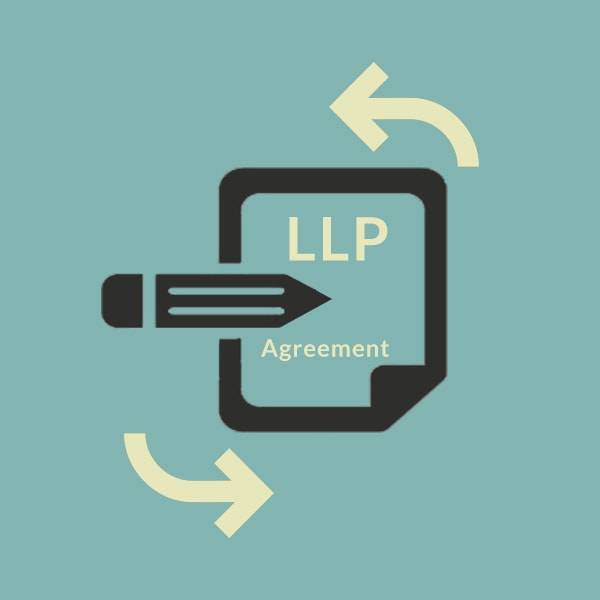
All about LLP Agreements
Introduction
LLP Agreements mean a written agreement between the partners of the Limited Liability Partnership (LLP) or between the LLP and its partners which establish the rights and duties of the partners toward each other as well toward the LLP.
It is a body corporate created by law. As per the LLP law, any two persons can incorporate an LLP by subscribing to the incorporation documents. Once an LLP is formed, the rights and duties of partners are governed by Schedule One of the LLP Act, unless the LLP’s partners or the LLP and partners create an LLP agreement. The self-agreed LLP agreement provides the flexibility and contractual freedom to partner so as to fulfill their needs and interest as compared to an incorporated business structure as the majority of its administrative procedures are framed as per prescribed provisions of the Companies Act. So a well defines LLP Agreement is a must for smooth long term functioning of an LLP.
LLP Agreement
It is compulsory to make and execute LLP agreement within 30 days of the incorporation of LLP as per the LLP incorporation document (Form 2). It defines the roles, responsibilities, rights, and powers of the partners to LLP and to each other. Hence, it creates the foundation for the smooth running of LLP. LLP agreement clarifies the managerial, operational as well administrative outlook and set well define methodologies for decision making, adding a new partner and disassociation of existing partner.
Therefore, well structured detailed LLP set the groundwork and act like a cement to strengthen the firm. It is the guide that directs the LLP. Creating such comprehensive all inclusive documents requires experience and expertise in the field of corporate and contract Law as well as LLP. Besides, excellent drafting skills are requisite for forming such agreement. LegalRaasta.com has several professional expertise and experience.
Our expert team at LegalRaasta can help you prepare LLP agreement customized to the needs of LLP registration process.We have drafted numerous, bespoke LLP agreements for India-based businesses and entrepreneurs.
Content of LLP Agreements
A well structured and clearly summarized LLP agreement is very much required for the successful functioning of an LLP. Since As provisions of the company law is not applicable to an LLP, henceforth all corporate structure related issues must be taken into consideration.
LegalRaasta.com has developed customized LLP agreements after careful study of the LLP Act and Rules. Our standard LLP agreement contains the below-mentioned provisions:
a. Name of the LLP
The name of the LLP shall end with LLP or Limited Liability Partnership as per the provisions of the LLP Act.
b. Date of the agreement and parties of agreement
After incorporation, the LLP agreement is to be executed within 30 days as per the LLP Act. LLP agreement is between partners of LLP which can either be LLP or individual partner. Hence for our agreement, all the parties to the LLP agreement which can be LLP or individual or both are taken into consideration. Statement of background – This section illustrates incorporation details, the state of registration, activities of LLP, etc.
c. Introductory provisions
It includes the definition of terms used in the LLP agreement, the name of the LLP and provision of future name changes, initial partners, new partners admission, business activities and their scope, power of LLP, duration, management, accounting, auditing, etc.
d. Partners’ contribution and method of contribution
It portrays the contribution ratio of partners in terms of capital, interest on contribution, profit sharing ratio as well as the time period after which the capital can be withdrawn by any of the partners. It is important for maintaining the good cordial relation between partners.
e. LLP record keeping and bank arrangement
It includes the recording, maintenance, and storage of LLP books and other related documents.
f. Allocation and distribution
It clarifies the method of profit sharing among partners and distribution including interim distribution or final distribution in the LLP.
g. Capital and current account
It includes particulars that will be credited and debited in each account.
h. Disassociation of partner
It includes the terms and conditions when partners can disassociate or withdraw from the LLP. It illustrates the procedure, the rights of existing partners, and rights on assets after disassociation, as well as notice to existing partner.
i. Redemption and cross purchase of rights
It includes rights of partners as well as how those rights can be redeemed from the LLP. It considers methods of readmission as well as cross purchase.
j. Issue of partnership rights
It provides information related to admission of new partners and its rights thereafter.
k. Sales, transfer of partnership rights
It provides procedural information about the selling, transferring of partnership right to existing partner and a new partner. Partners’ meetings and voting – It covers the mode, time period of the meeting, the method of the decision-making process and the voting rights of the partners concerned.
l. Partners’ rights to records
Each partner has the right to scrutinize the records and documents of LLP for avoiding misappropriation and embezzlement. Rights of each partner to inspect records of LLP and copies of the same.
m. Management and fiduciary duty
It takes into account the responsibility of the management of a company and the appointment of manager as well as the person liable for fiduciary duty i.e. taking care of legal matters as well as funds and assets of the company. Arbitration and general provisions: In the case of disagreement between parties, the parties may involve the third party known as an arbitrator who listens to both the parties and takes a decision, which is to abide by both the parties concerned.
Types of LLP Agreements
LLP agreements should be customized and meet the requirement of all the partners without compromising on the objective and growth of LLP. Can you imagine one dress that can fit all? Similarly, one agreement may not fit all the partners into a satisfactory zone. Case. Following are the main types of LLP agreements.
Equal Rights LLP (1:1)
In such type of LLP, all partners contribute equal capital, time, and energy in the LLP. All receive the same remuneration and share the equal profit and loss. The decisions are mutually taken. All the partners have same rights and contribute equally to the management as well the business of the LLP.
Differential Rights LLP
In such type of LLP, Partners have a different amount of contribution in terms of capital, energy, and time. Hence the right to profit sharing, decision making, and managerial right differs. It can be classified into
- LLP Agreement wherein rights are in the ratio of contribution and profit sharing. The level of contribution may decide the level of profit sharing.
- LLP Agreement wherein rights are in the ratio of contribution only, but profit rights differ. Management rights may be equal or in some other ratio
Absolute Rights LLP
If, in LLP, there are only two partners and one person is appointed as the nominee or in only as the investor. The agreement is to be drafted in such a way that one person will get all the management as well as decision-making power.
Husband & Wife LLP
If Husband and wife are running LLP, then special agreement pertaining to tax liability can be made so as to minimize the family tax liability. Besides, they can choose any of the above-said types of LLP according to their convenience and need.
Differential Rights and Differential Powers LLP
In such type of LLP, partners hold different rights and powers. Some may be just investing while other may be holding managerial responsibilities. In order to avoid miscommunication and conflict, the rights and power of partners must be well defined and agreed on.
Partner Managed LLP
In such type of LLP, there are multiple partners. It is same as differential rights and power LLP where some partners are nominal or investor while others are holding; administrative/management/operational decision-making powers.
Board Managed LLP
In such type of LLP, management is done by forming the board /committee of partners similar to a board of director in the company. Overall control rest in the hands of all partners whereas day to day managerial and operational, decision-making power rest in the hand of board/committee of partners.
Manager Managed LLP
In such type of LLP, partners appoint the manager and give him specific powers related to administration, management, operational. In this multi-partnership LLP, the role of the partner is as investor and do not have any decision making right on day to day activities of the company
LLP Agreement and Tax Planning
Since LLP is a “Firm”: hence all the tax provision of “Firm “are applicable to LLP provided the following criteria are fulfilled. There must be evidence of relation of partnership between the parties concerned through a proper instrument. The individual shares of partners must be well specified in the instrument.Hence, to avail the tax benefit under Income Tax Act, clear, defined, concrete LLP agreement must be an instrument. It shall contain all the details related to partnership, their share, and contribution.
In order to avail tax benefits, following consideration may be taken into account while drafting LLP agreements are:
- Adding provision of Interest on capital contribution that will be deducted from LLP income within the overall limit
- The LLP agreement must clarify the working partners and the remuneration payable to them so as to reduce the LLP income and hence the tax liability. Remember, to include partners name as well as define them as “working partner” in the LLP agreement to avail this benefit.
Visit HireCA.com Now



















